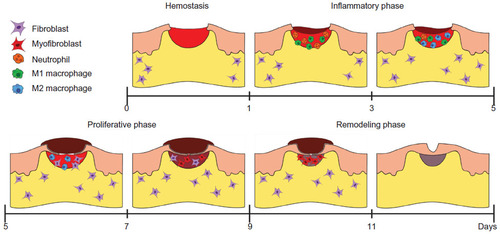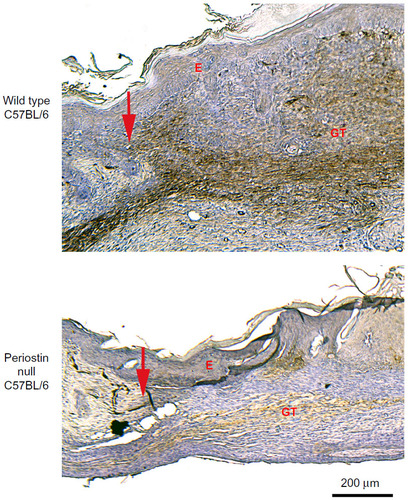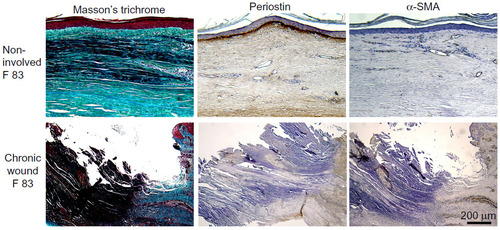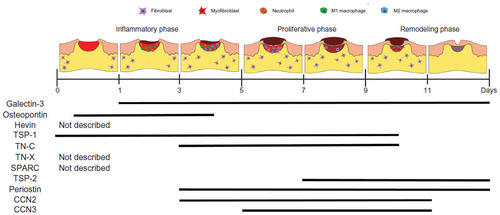Figures & data
Figure 1 Schematic representation of the phases and timeline of the skin healing process in mice. Four overlapping phases shown schematically result in wound closure. The cellular processes at each stage are described in detail in “Normal skin healing process in mice”.

Table 1 Influence of genetic deletion of matricellular proteins on skin healing in mice
Figure 2 α-Smooth muscle actin expression is significantly reduced in periostin knockout mice compared with wild-types at 7 days postwounding. Red arrows mark the wound edge.

Table 2 Known expression profiles of matricellular proteins in human wounds


